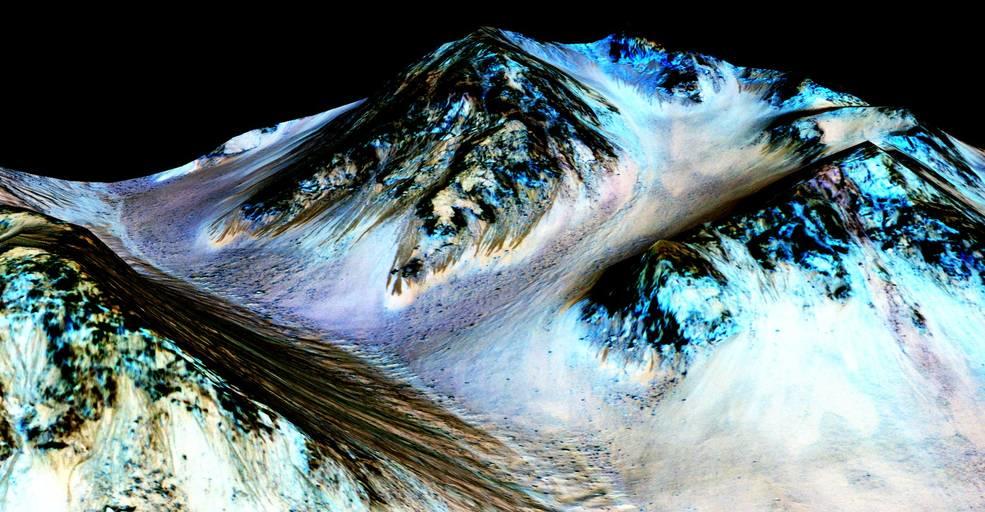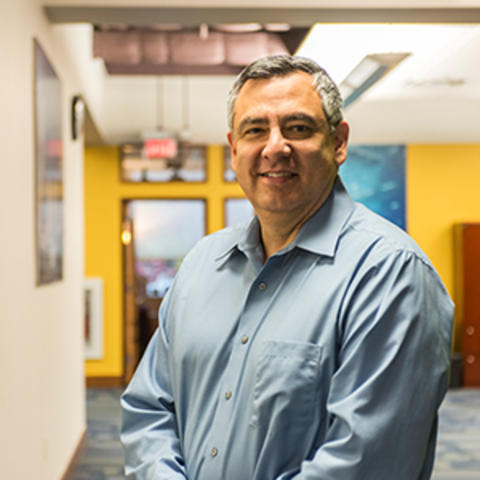
Section Branding
Header Content
The Latest News & Entertainment Is Blinding Us With Science
Primary Content

Okay, Internet conspiracy theorists (you know who you are), try this on for size: the news that there's water on Mars is part of a recent media-driven plot to celebrate science.
After all, why schedule a NASA news conference on the Martian water findings for the same week that the new Ridley Scott/Matt Damon movie, The Martian, is set to hit theaters? The official explanation is that the Sept. 28 news conference was actually timed to the same-day publication of a scientific paper about the Mars water results (co-authored by Georgia Tech grad students Lujendra Ojha and Mary Beth Wilhelm). Which makes sense, but since when has that ever stopped web conspiracy gurus?
Also consider that the aforementioned Matt Damon movie is a 2-hour, 21-minute ode to both NASA - at least a near-future version of it that's resumed sending humans into space - and the special brand of science nerds who work for the Jet Propulsion Laboratory in Pasadena, Calif. They're the ones who play a big role in getting Damon's character, an astronaut accidentally stranded on Mars, back to Earth. For his part, Damon plays a botanist who has to figure out how to grow food in Martian soil and stay alive long enough for that rescue mission. "I'm going to have to science the s**t out of this," he says early in the movie, and you can't find a more damaging piece of evidence that not only is this all part of the Vast X-Wing Media Science Conspiracy, but this is also the rarest of science-fiction movies: one that puts as much emphasis on the science part as it does on the fiction. I saw a preview screening at Atlantic Station Monday night, and I can tell you that it pulls off that delicate balancing act with thrills, humor and some fine acting.
Oh, and those JPL nerds? It's very easy to picture Irving, Tx. amateur clockmaker Ahmed Mohamed one day joining them to manage his own team of developers and engineers in Pasadena. The 14-year-old nerd was famously tweet-invited to the White House two weeks ago by President Obama because "we should inspire more kids like you to like science. It's what makes America great."
Unfortunately, that tweet seems to have inspired as much opposition research into Ahmed's character, his school record and his family as it did invites to tech companies and late night talk shows. His story could have easily fit into the narrative that's built over the last two years about providing more STEM (science, technology, engineering and math) education in public schools to feed the insatiable tech industry appetite for skilled workers. It also provides the bonus of how to include more diverse Americans into that STEM mix, a need that's been proven thanks to A-list tech companies like Google and Apple admitting they haven't hired enough women and people of color.
But that storyline doesn't have enough fire to fuel the 24/7 media machine, which in true 20th-century fashion is powered by toxic heat and steam, not new-century cool fusion.
Even the moon is in on this science plot - in more ways than one. Last weekend, lucky stargazers around the country got a good look at a rare "supermoon" or "blood moon" lunar eclipse. Now picture a catastrophic celestial event that shatters that moon into seven big pieces looming in our night sky. That's the premise of Neal Stephenson's new science fiction novel "Seveneves" and it doesn't bode well for humanity. With the help of science and technology, along with a celebrity astronomer-type clearly modeled after Neil DeGrasse Tyson, the nations of the earth figure out a way to keep the human race going by remodeling the International Space Station into something called the Cloud Ark. Stephenson's style, evident in previous celebrated works like "Cryptonomicon," "Anathem" and the Baroque Cycle trilogy, is to mix pages-long dissertations on science and new technologies with some top-notch action set pieces. You either view that style as a gift or a curse. I like it because Stephenson always manages to make it palatable thanks to doses of wry humor. If you stick with "Seveneves" you'll get some handy tutorials on orbital mechanics and genetic manipulation along with examples of good old fashioned human emotions dramatically endangering the most complex plans of science and technology.
Another exhibit in this exposure of the science conspiracy: One of the recent GOP presidential debates actually included a question on climate change, a topic for which the science is settled - unless you need primary Republican voters to make you the party nominee. This election cycle, however, will feature more fact checking then ever of answers regarding positions on climate science and vaccines. That's encouraging, if enough voters choose to educate themselves.
The rest of the year will no doubt give us more cause to consider this nefarious plot to elevate science. There may be tech-based solutions to cyberattacks and data breaches, more advances in medicine and healthcare technology, new discoveries in space and in our oceans. We'll continue to find ways to push the entertainment and leisure time envelopes by mixing technology and media, streams and networks.
Hopefully, all of this will ultimately be accepted as good things, negating the need for Vast X-Wing Media Science Conspiracies.
Secondary Content
Bottom Content





